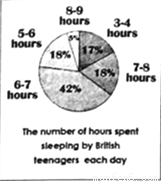中央电视台《经典咏流传》节目的播出,再次激发了人们对经典文学作品的阅读热情。读书可以成就更美好的自己,让读书伴随我们成长。请根据以下要点提示,以“Growing up with Reading”为题写一篇英语短文介绍你曾经读过的一本书或—首诗,并建议大家多读书,读好书。
要点提示:
读书的重要性 | 1. 获取知识,开阔眼界; |
2. 提升自我,增强自信…… | |
读过的一本书或 一首诗 | 1. 作品内容简介; |
2. 读书感悟及对自己的影响。 | |
多读书,读好书 | 1. 利用闲暇时间多读书,养成读书的好习惯; |
2. 多读经典文学作品…… |
注意:
1. 短文应包括以上要点,可适当发挥,以使行文连贯。
2. 文中不得出现自己的真实姓名、学校及地名。
3. 词数:80-100(文章开头已给出,不计入总词数)。
参考词汇:classic 经典作品; open up one’s eyes 开阔眼界;improve oneself 提升自我; be more confident 更自信;responsibility 责任;cooperation 合作。
Growing up with Reading
Have you watched the program Everlasting Classics on CCTV? This program makes us more interested in reading books, especially classics.
Growing up with Reading Have you watched the program Everlasting Classics on CCTV? This program makes us more interested in reading books, especially classics. Reading is very important. We can get...Teenagers are known for being creative and full of new ideas. Let’s have a look at these teenage inventions that might change the world.
Banana leaves usually go bad in two or three days. Tenith Adithyaa, a teenager from India, used UV to make the leaves stay fresh for a year. Tenith thinks that one day the leaves will be used for making plates, cups and other things. |
David Cohen, an American teenager, built an earthworm(蚯蚓) robot. It is able to go into the smallest places, where humans or dogs can’t go. It will be used for finding people in a fire or an earthquake. |
Remya Jose, a 14-year-old from India, found it tiring and boring to handwash clothes in the nearby river. She reused some bicycle parts and created a washing machine that saves time, energy and keeps people fit at the same time. |
Kenneth Shinozuku, a 15-year-old from New York, noticed that his grandfather who got Alzheimer's disease(老年痴呆) would often leave home and get lost. So he invented the wearable sensors(感应器)to help people find their family members like his grandfather. |
1.What is the passage mainly about?
A. Popular ads
B. Useful machines
C. Strange pictures.
D. Teenage inventions
2.The earthworm robot by David Cohen can ______.
A. make things stay fresh
B. help people wash clothes
C. go into the smallest places
D. take care of the old people
3.Which of the following is TRUE
A. Plates and cups are made of fresh banana leaves.
B. Remya's washing machine can also keep people fit.
C. David Cohen is a middle school student from India.
D. Kenneth's wearable sensors will keep old people at home.
1.D 2.C 3.B 【解析】短文展示了青少年的4项发明创造。如何使树叶保鲜;蚯蚓机器人;自行车部件改装的洗衣机;可穿戴的传感器。 1.主旨大意题。根据表格前面的句子“Let’s have a look at these teenage inventions that might change the world.” 让我们来看看这些可能改变世界的青少年的发明。可知短文展...




